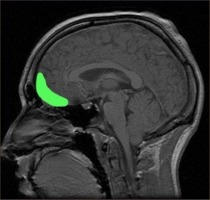
Scientists at the National Institute on Drug Abuse’s Intramural Research Program (NIDA IRP) have demonstrated distinct roles for two subregions of the orbitofrontal cortex (OFC) in goal-directed behaviors. The researchers recorded the activity of OFC neurons in rats that were trained to respond to a light by poking their nose into a port that delivered an olfactory cue, and then waiting for a chocolate milk reward. The recordings showed that neurons in the medial orbitofrontal cortex fired in response to what was signaled by the olfactory cue—whether it signaled that a larger, smaller, or unchanged amount of chocolate milk reward was available. In contrast, neurons in the lateral OFC fired according to which part of the behavioral sequence the animals were currently engaged in—receiving the cue, waiting for the reward, or receiving the reward.
The researchers suggest that the OFC, by tracking a reward’s predicted value and the steps toward obtaining it in separate subregions, may promote behavioral flexibility. The new IRP findings could help explain why, for many years, studies have linked addiction, which involves loss of behavioral flexibility, with dysfunction of the OFC.
Study:
- Lopatina, N. et al. Ensembles in medial and lateral orbitofrontal cortex construct cognitive maps emphasizing different features of the behavioral landscape. Behavioral Neuroscience.